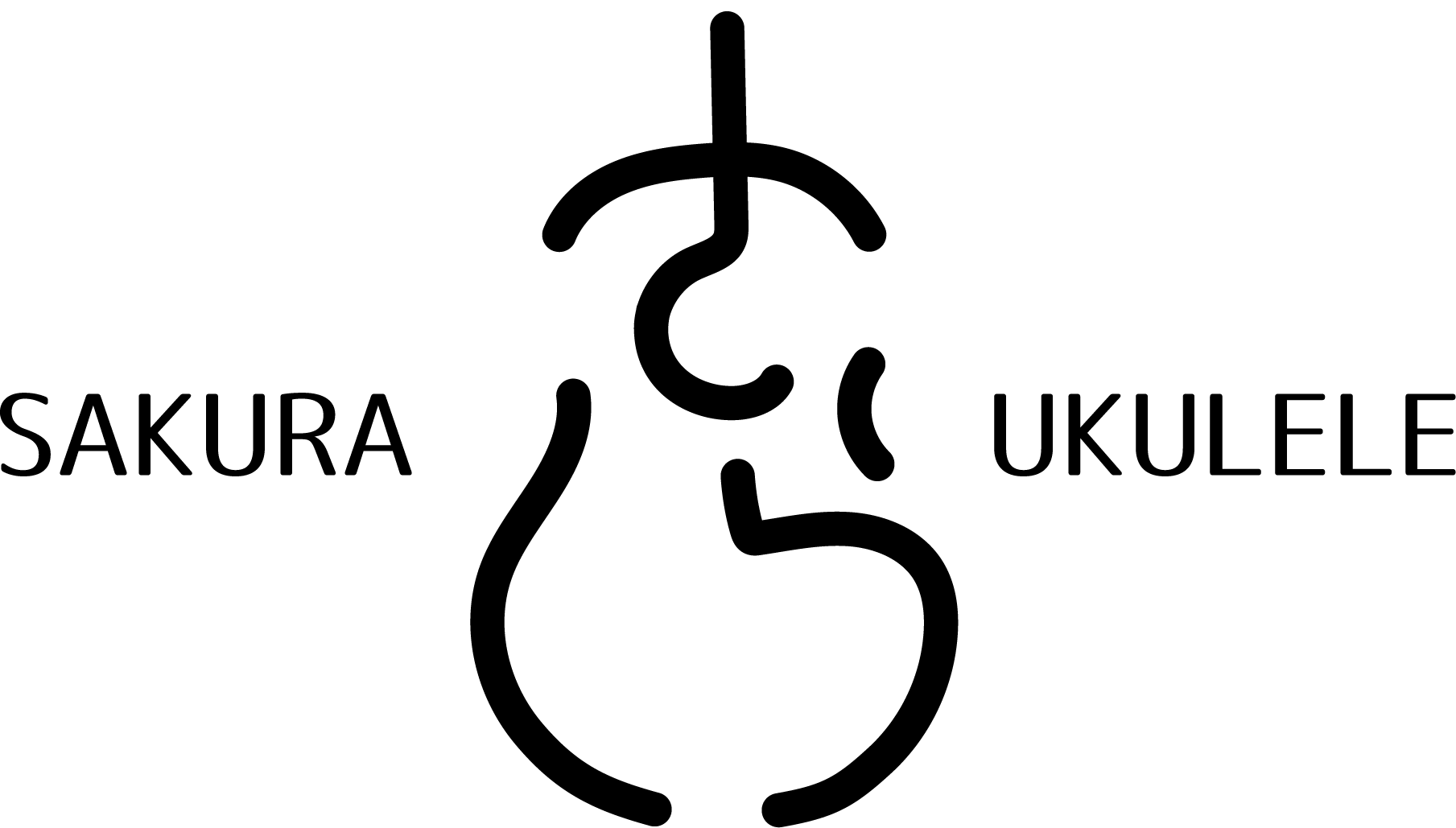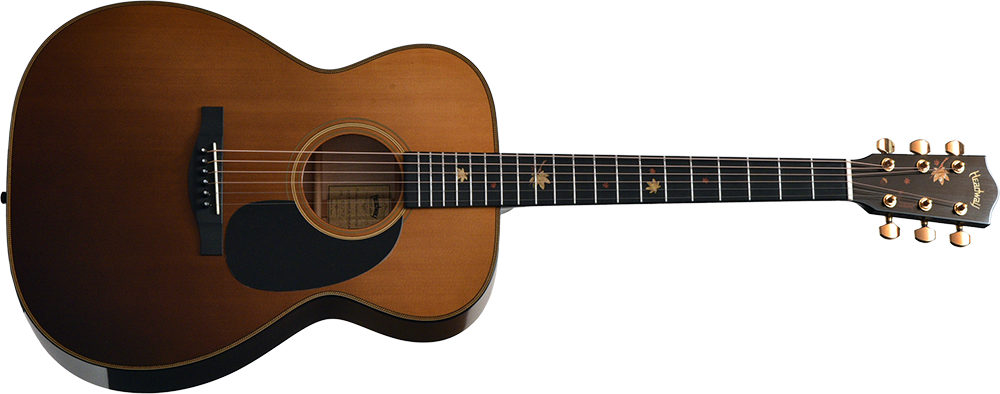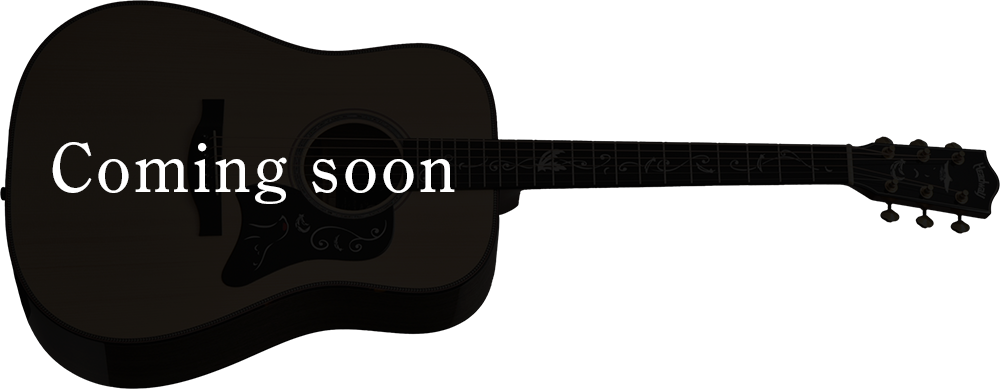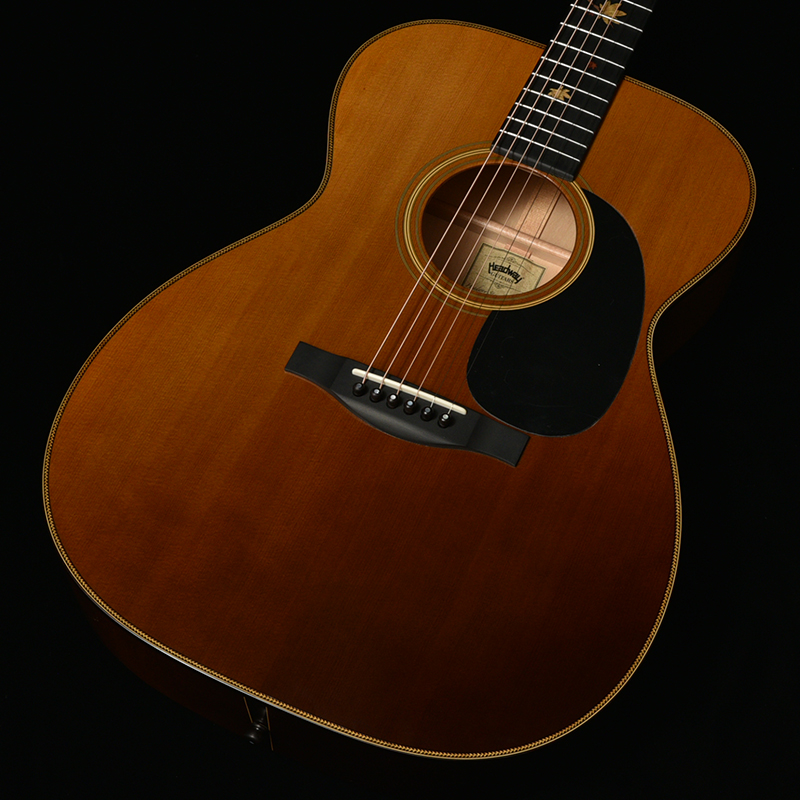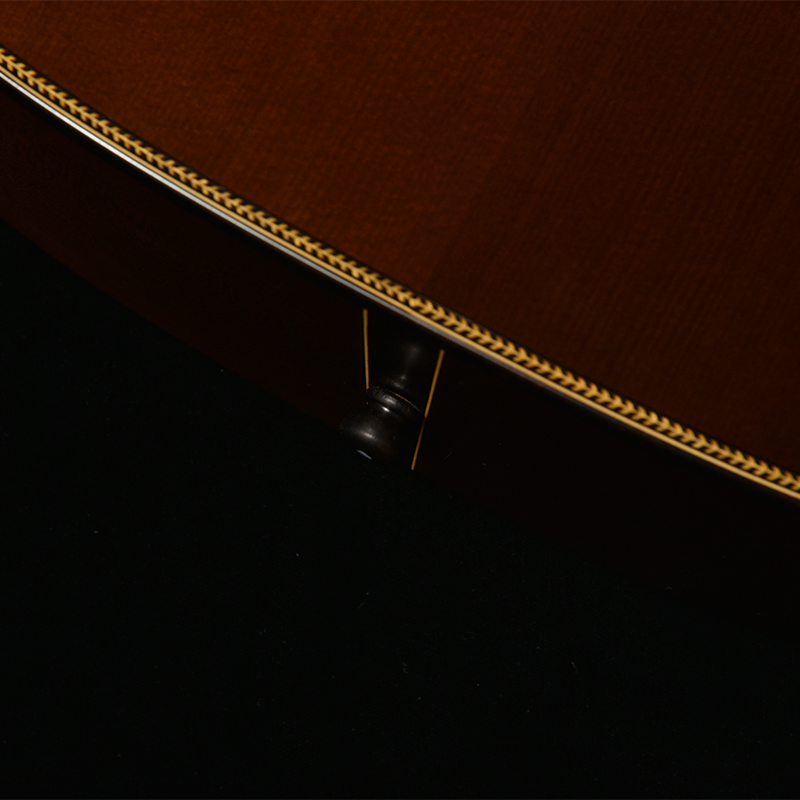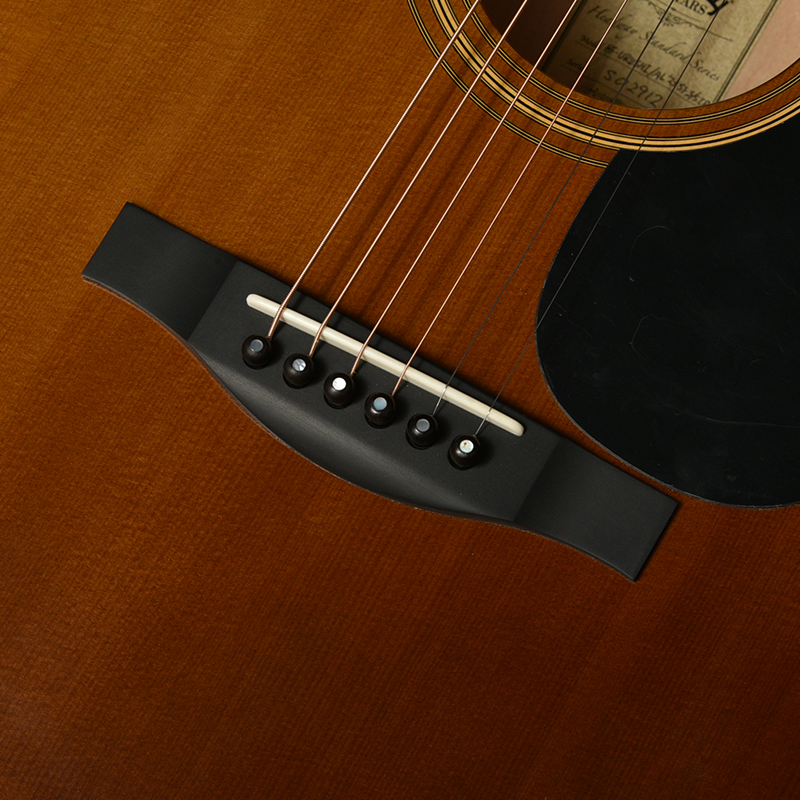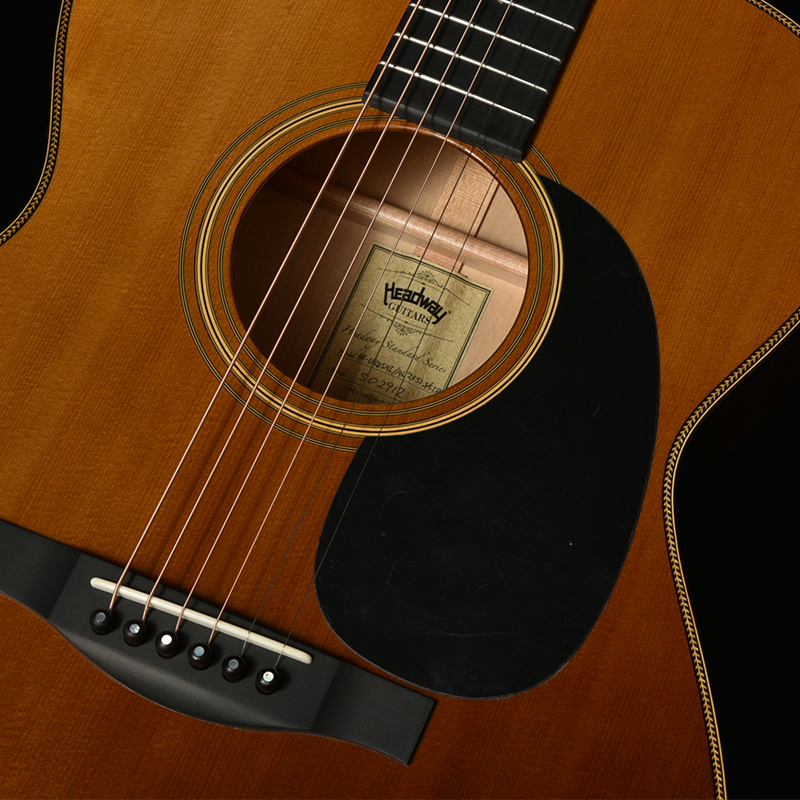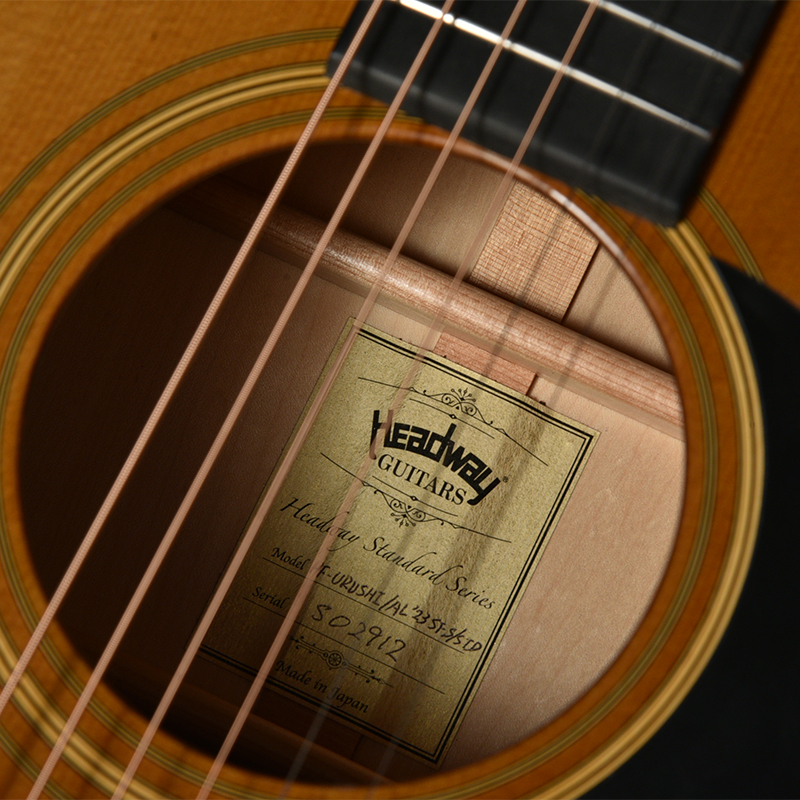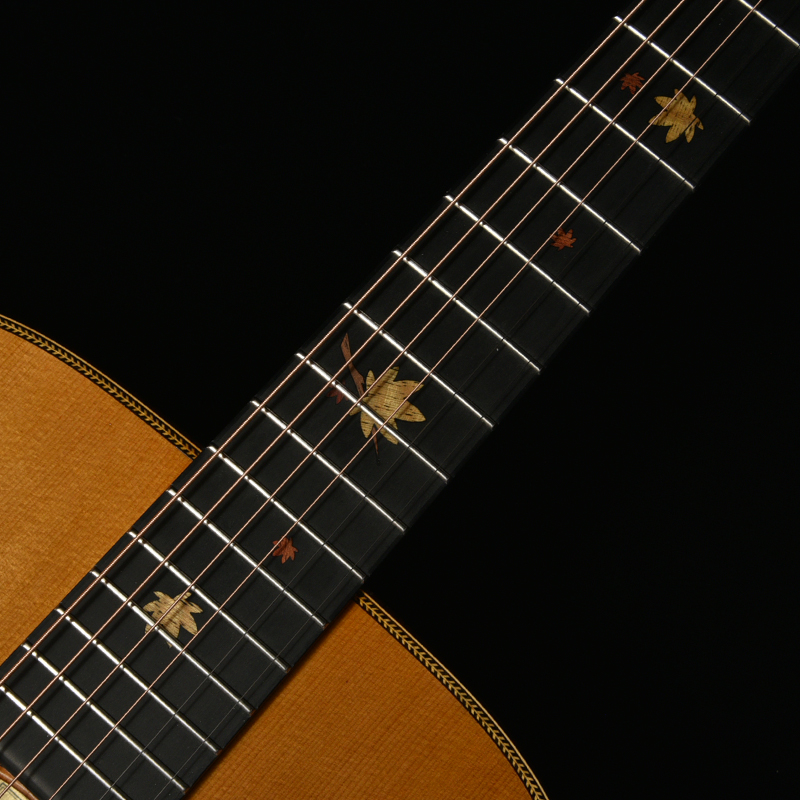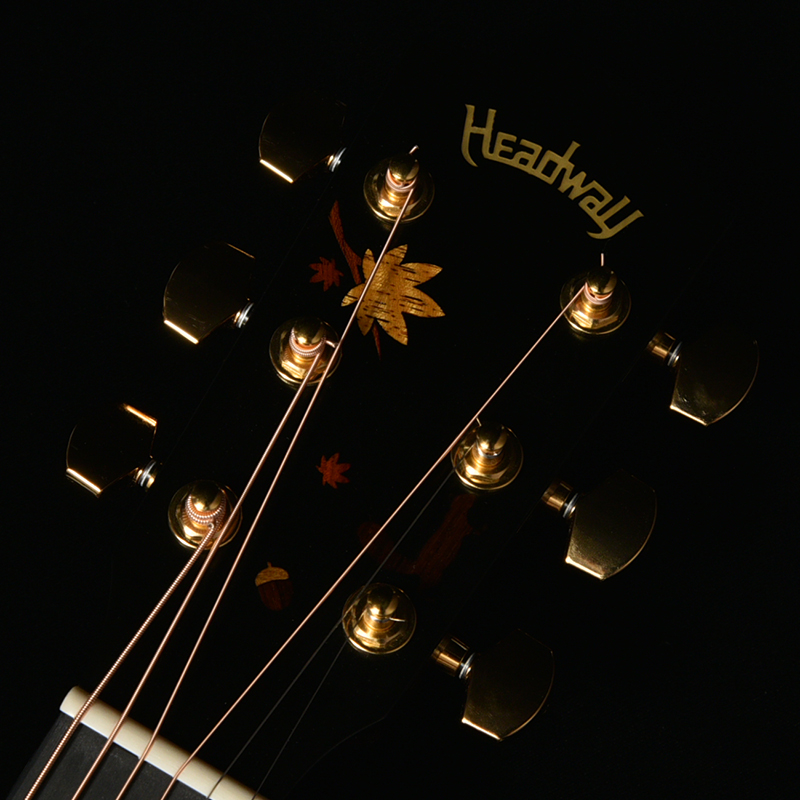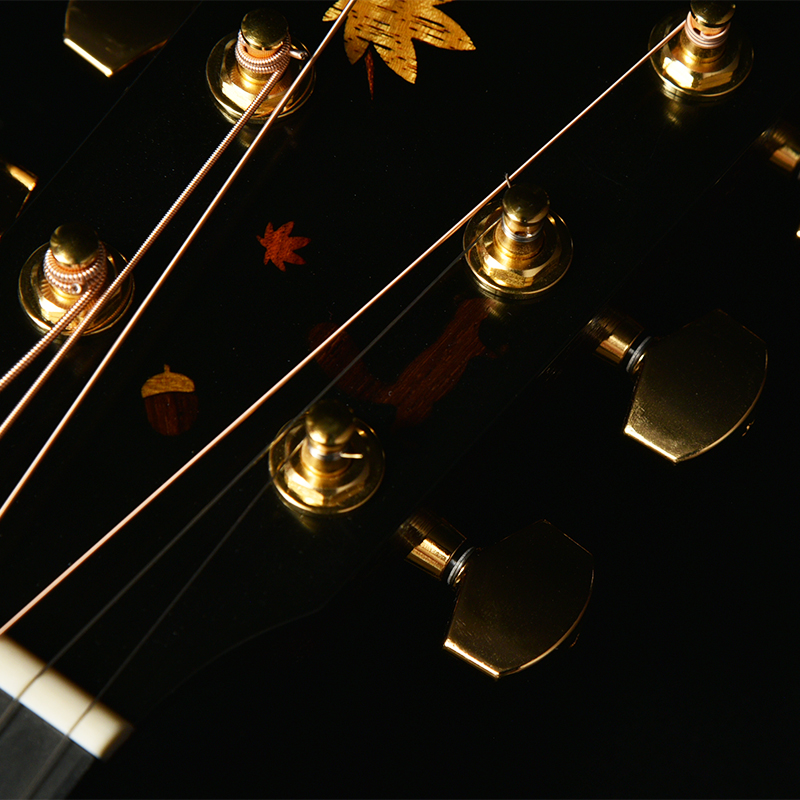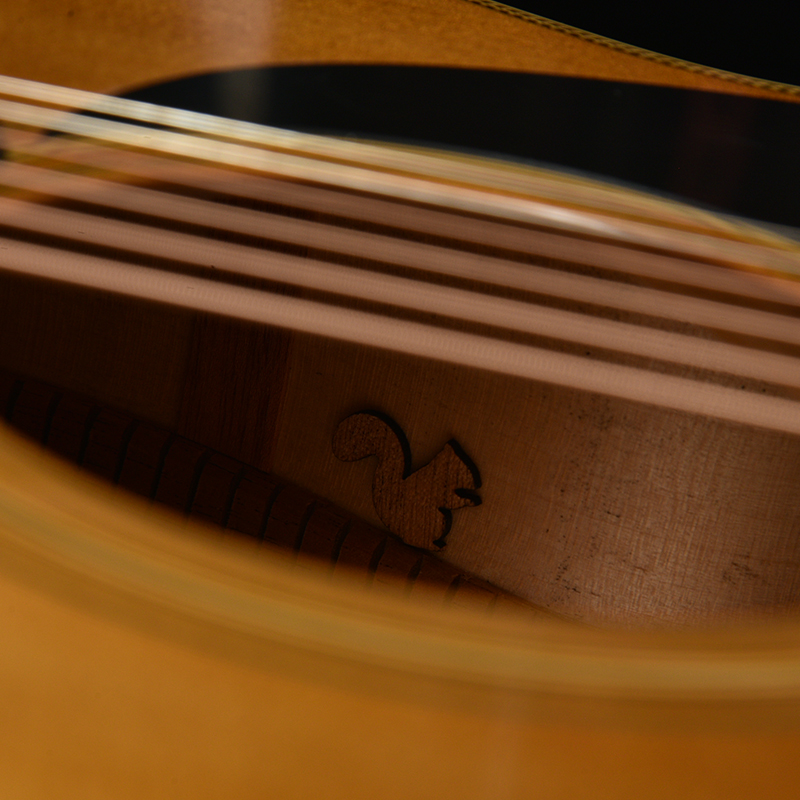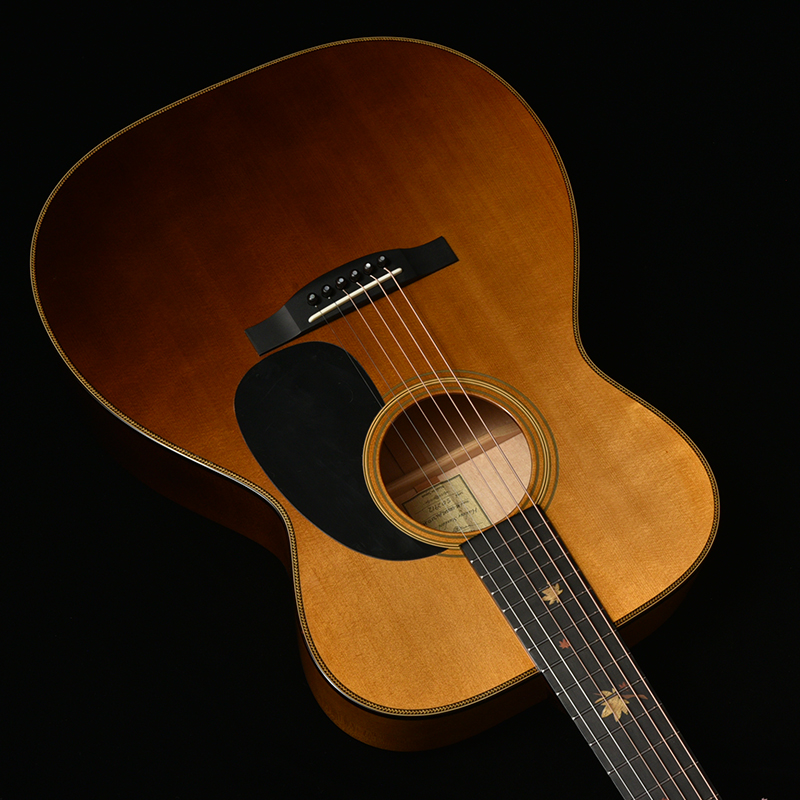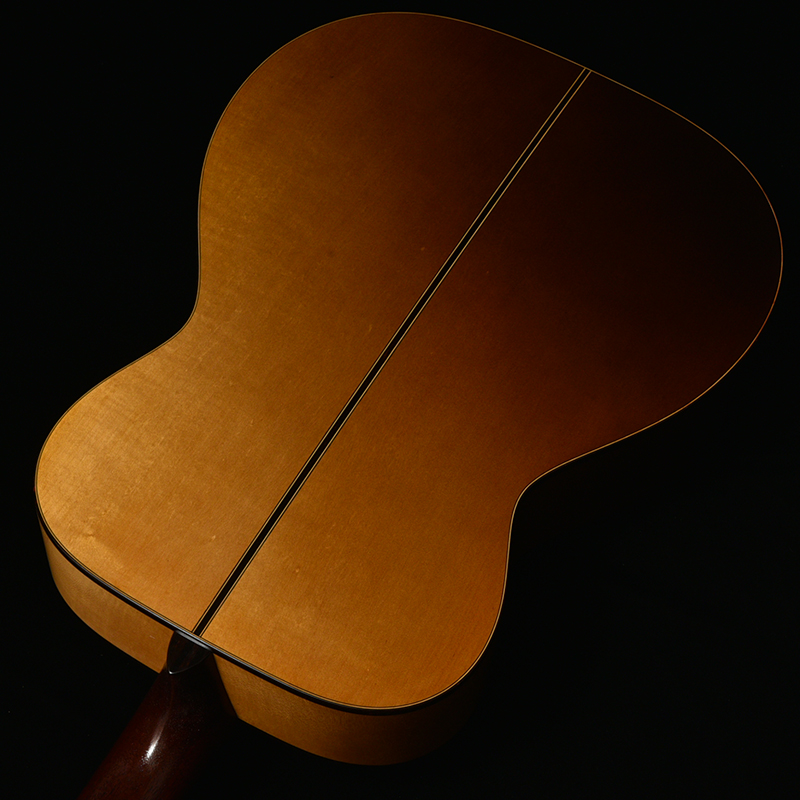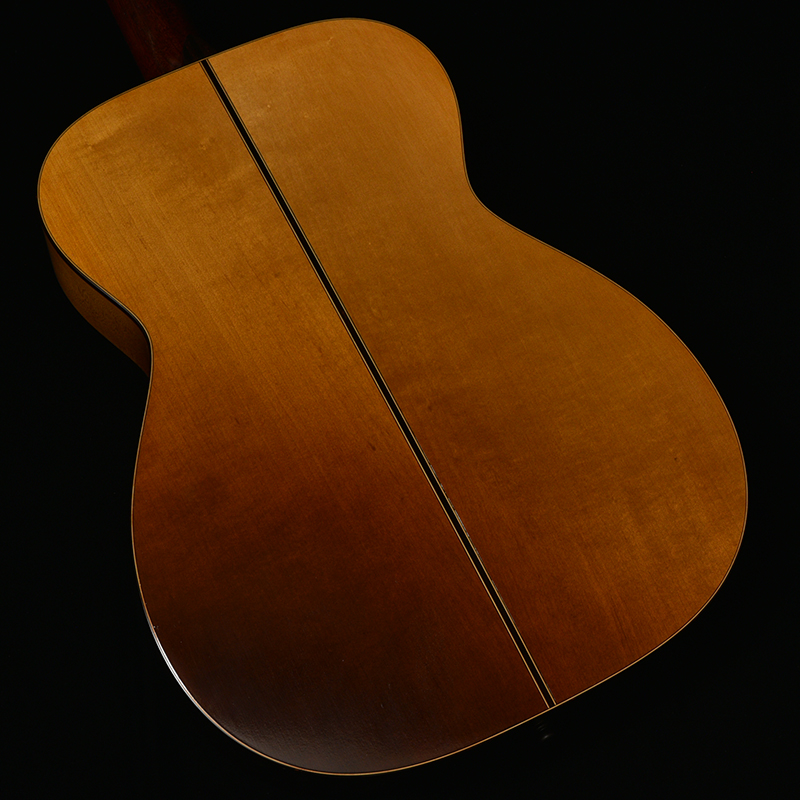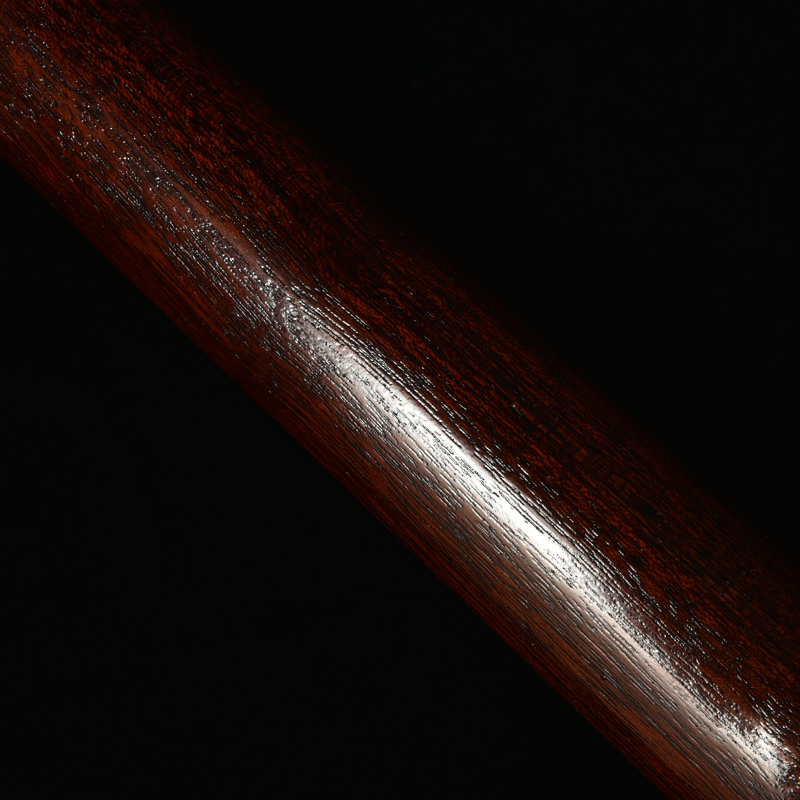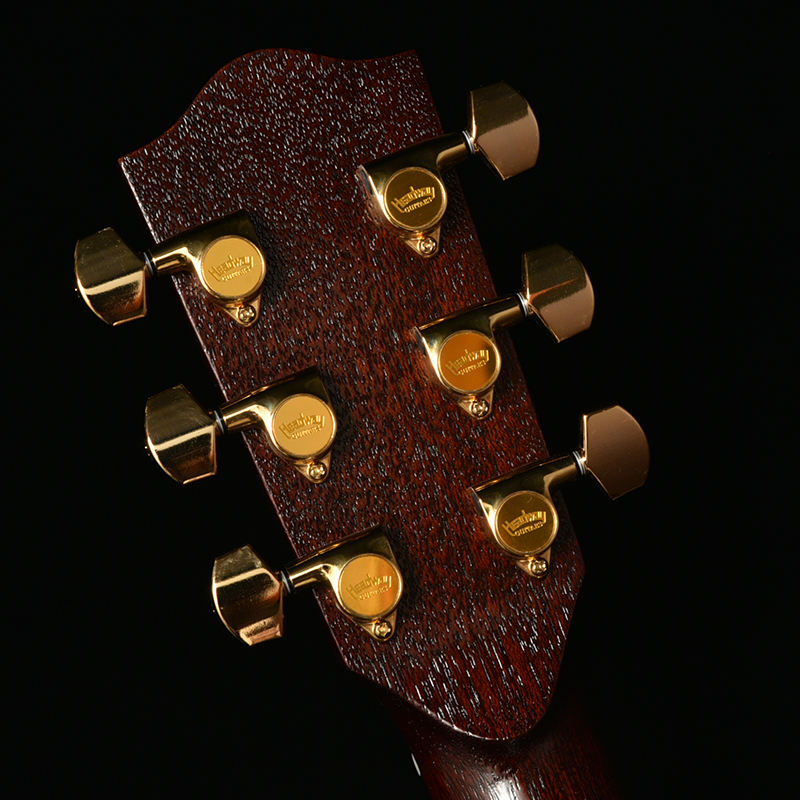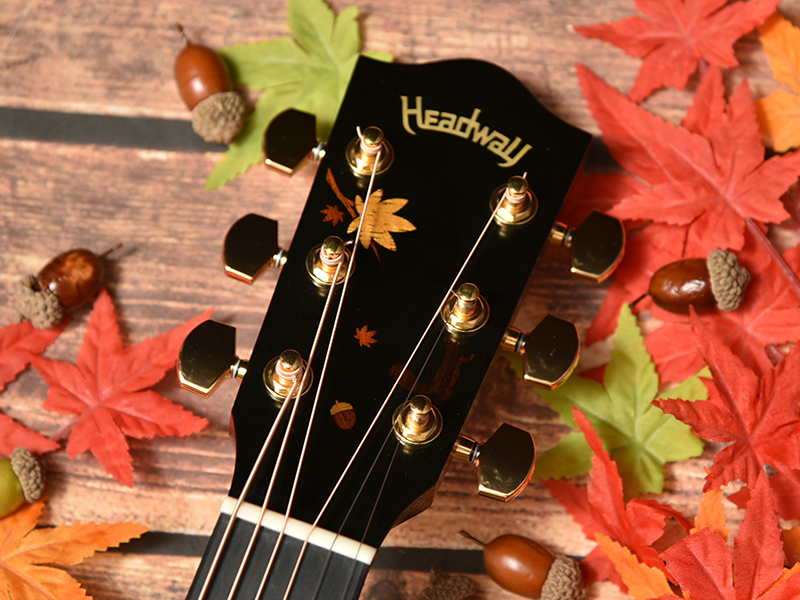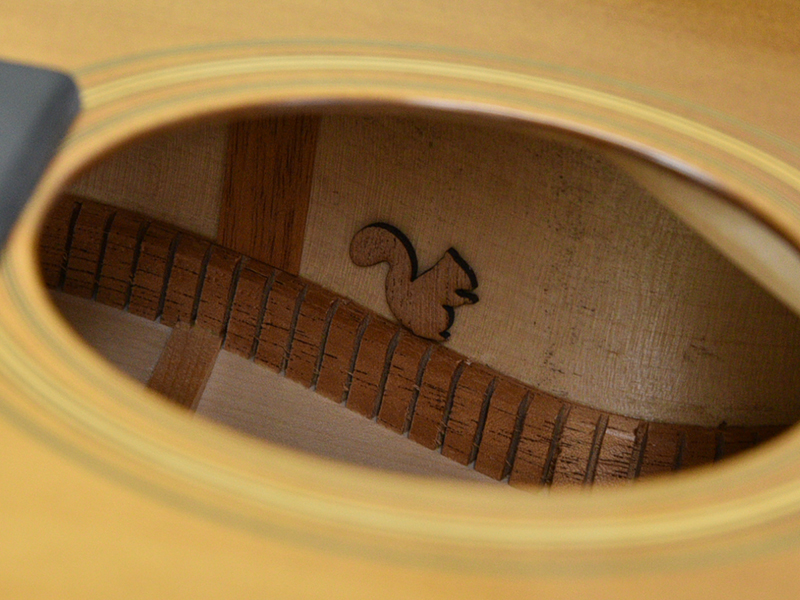HF-URUSHI/AL’23 SF,S/STD
MSRP¥300,000 w/o tax
Specification
- Body Top
-
Sitka Spruce
- Body Side&Back
-
Kaede
- Neck
-
African Mahogany 1P
- Fingerboard
-
Richilite
- Nut
-
Bone
- Saddle
-
Bone
- Bridge
-
Richilite
- Machineheads
-
GOTOH® SG301 01 GG
- Scale
-
628mm(24.75inch)
- Width at Nut
-
43.0mm
- Bracing
-
’34 Semi-forward-shifted, Scalloped X Bracing
- Finish
-
Urushi
- Strings
-
Elixir/NANOWEB Light(.012-.053)
- Accessories
-
Hard Case, Allen Wrench, COA
Introduction
※Expected release date – August
Urushi-lacquer Guitar × Autumn Leaves
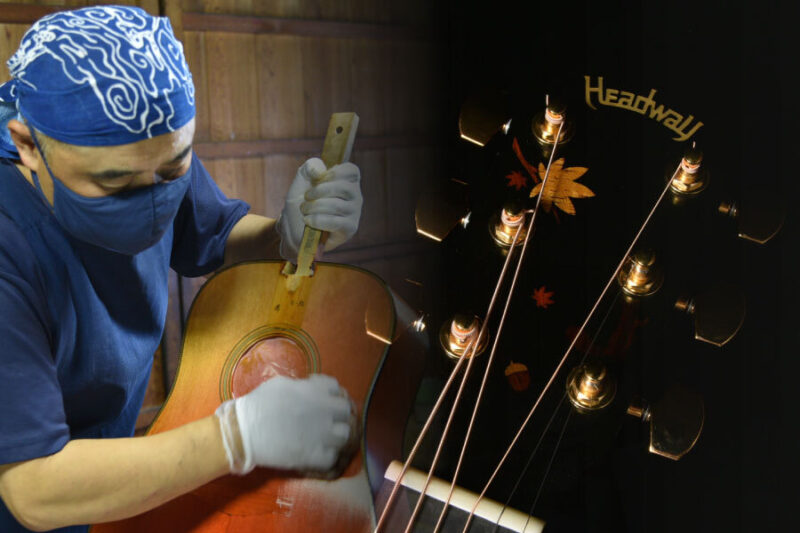
The ever-evolving “Urushi Guitar” from Headway and Japanese Urushi-lacquer craftsmen has a special model available only this fall. With the theme of “Autumn in Japan,” we aimed to express this beautiful scene using the entire guitar. Continuing from last year, the Urushi coating will be finished by “Sai Urushi KOBAYASHI,” which has its workshop in Nagano Prefecture, the same prefecture as Deviser.
What’s Urushi?
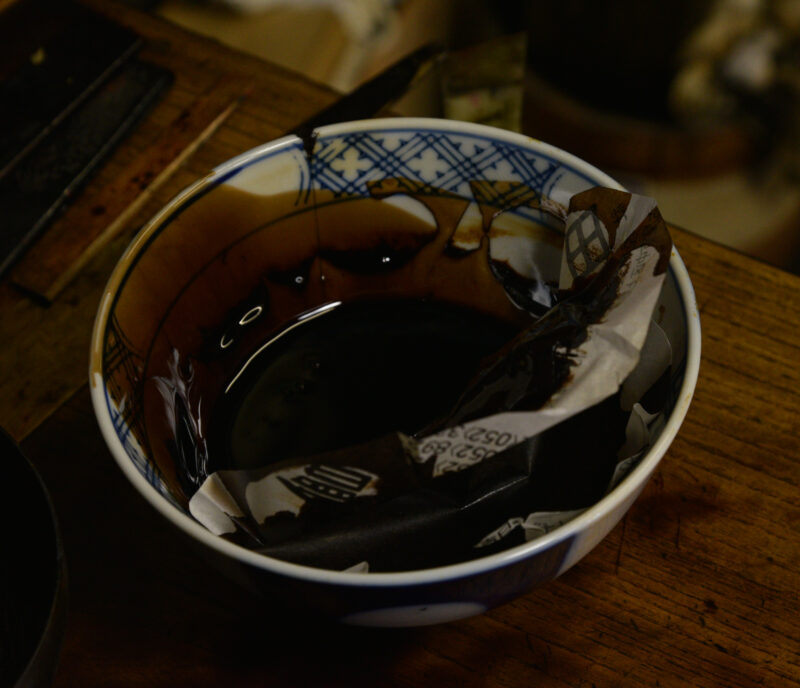
Urushi, or Urushi-lacquer, is a lacquer made out of the sap of the Urushi tree. Urushi in Japan is said to have started in the Jomon period (710-794). The making and utilization of Urushi lacquer is a traditional technique that has been loved by people since ancient times and has been handed down from generation to generation. So much so, that around the world lacquered items that utilize or resemble the aspect of Japanese Urushi lacquer are known as “japan”.
Design that heralds the arrival of autumn
Among the colorful autumn leaves, there is a squirrel chasing acorns. It combines a playful feel with its elegant design.
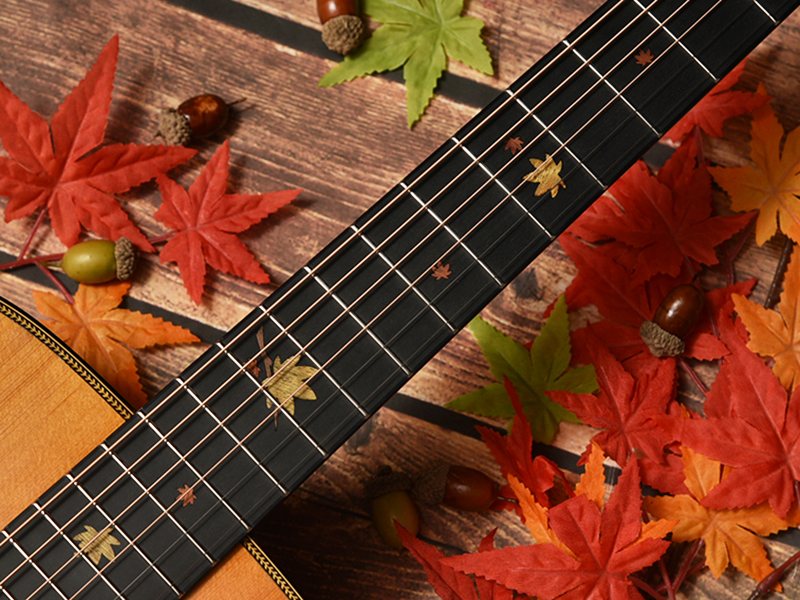
The fingerboard inlay is also decorated with autumn motifs. The red and yellow autumn leaves fluttering and falling down evoke a scene of a beautiful autumn day.
Kaede body dyed in autumn colors
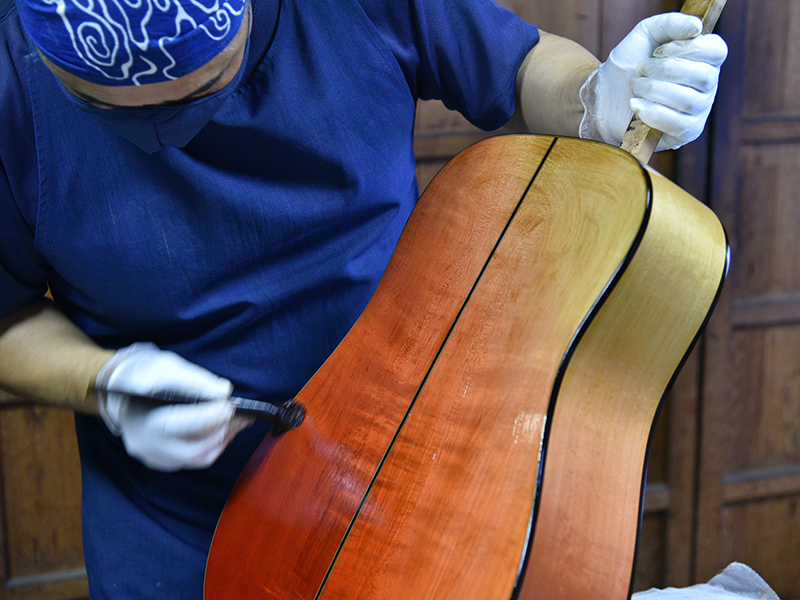
To embody the Japanese guitar, the sides and back of the body are made of -Kaede- wood, also known as Japanese Maple, a Japanese wood material with a white, glossy surface.
The Urushi-lacquer finish is characterized by allowing the texture of the underlying wood grain to shine through. This year’s models feature a gradation of colors, the first attempt at such a coloration on an Urushi-lacquer model. We went with two options this time around: “Urushi RED-GRD” in the color of a sunset, and “Urushi BR-GRD” floating in the autumn night sky.
Urushi-lacquer and Guitars
Excellent durability
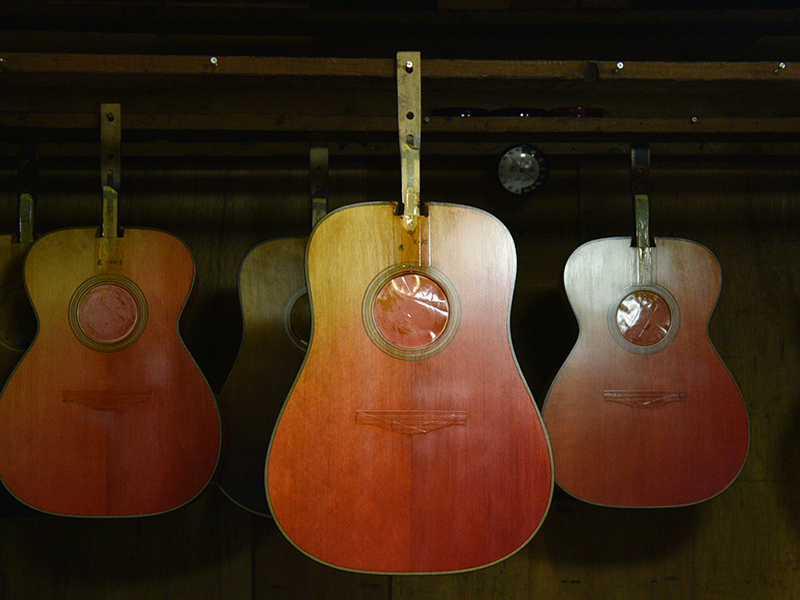
Urushi-lacquer paint has a very thin coating film, consisting of a coating thickness of about 0.05 mm. Although the numbers alone may raise concerns about its durability, it adheres to wood more profoundly than solvent-based options, resulting in a very strong finish. Urushi-lacquer coating also has excellent antiseptic, waterproofing, and mothproofing qualities, and it is said that “Urushi-lacquer coating becomes most beautiful after a few decades”.
A sound that develops as it is played
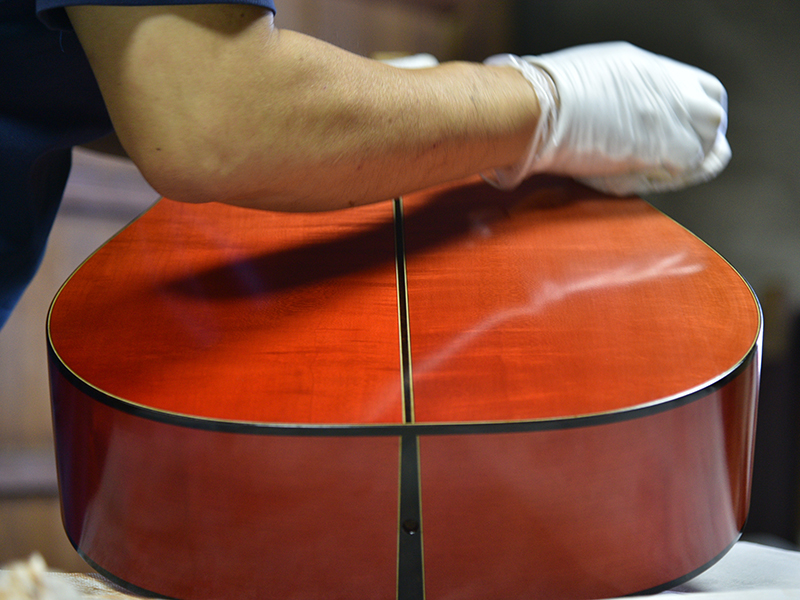
The sound is so natural that it can be called “the pure sound of Urushi”. It preserves the original freshness of the wood materials and can be felt directly by the ear. While the beautiful appearance of the finish and the change in sound quality due to the material’s can be compared to that found in a conventional solvent-based alternative, the Urushi-lacquer finish is the one and only technique that allows you to experience this natural, pure sound in a more natural way.
Urushi Guitar Q&A
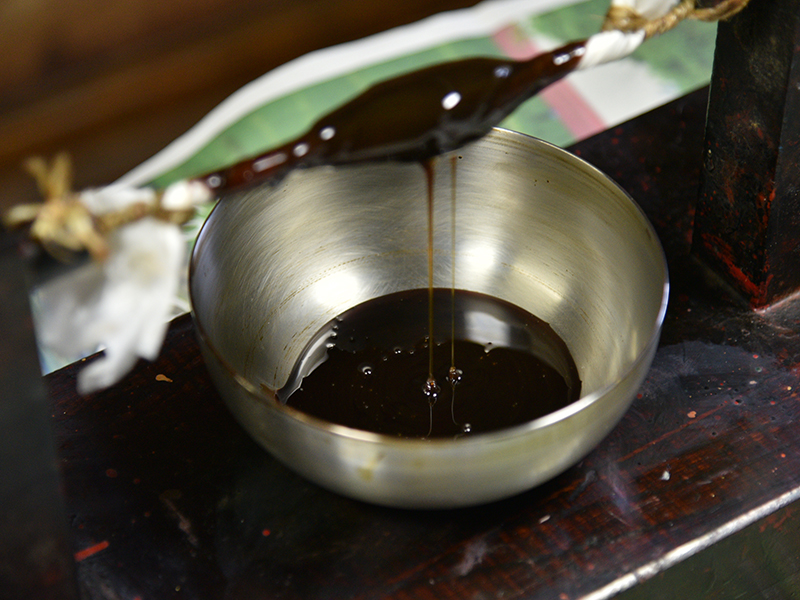
—Q. Is there anything I should be careful about taking care of my Urushi guitar?
A. For daily maintenance, wiping dry with a cloth is optimal. Polish and abrasive chemical cloths may damage the finish. If there is a noticeable stain, we recommend wiping it with a cloth wrung tightly with water.
—Q. How to store and take care of it?
A. Storage is the same as for a regular acoustic guitar. After use, loosen the machine heads a little and wipe it down to ensure a long life for your guitar. (A dry wipe is recommended, so please refrain from using solvents, etc.)


